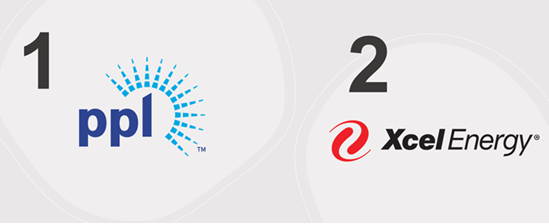Have you wondered how your utility website stacks up against others? Every other year, we complete the E Source Website Benchmark. In 2021, we reviewed 85 utility websites from across the US and Canada. Here, we highlight a few of our key findings and announce the utilities that scored the highest on individual attributes.
Utilities have switched from designing mobile sites to designing responsive websites
From our review of utility websites, we found that more utilities have switched to a responsive design, meaning the design of the website changes to best fit the screen size the customer is using. In 2019, 73% of the websites in our study were responsive. In 2021, that number jumped to 91%. Responsive design leads to happier customers because they don’t have to zoom and scroll when using their smartphone or tablet to access your website. It can also be easier for utilities because they only have one website to maintain rather than two—their desktop version and their mobile site.
Mobile device usage has increased over the years. The first step in your mobile strategy should be to make your website mobile friendly. Because the industry has mostly done that, we now recommend adding a mobile app to increase self-service.
More utilities are following WCAG, but there’s still a long way to go
The Web Content Accessibility Guidelines (WCAG) is a consistently updated set of protocols that ensures everyone can understand online content. These protocols give us a defensible and robust framework to understand what kind of accessibility issues customers might face when visiting your website and the best way to avoid those.
Our Website Benchmark study uses the WAVE web accessibility evaluation tool to measure accessibility. A website that produces zero errors meets the highest standard for accessibility compliance for our study. In 2019, 5.2% of the utility web pages we tested met the highest standard for compliance. In 2021, 8.9% of the utility web pages tested met the standard. This is a small percentage, but we’re heartened to see more utilities making accessibility a priority in their website design.
If you’re wanting to improve accessibility right away and aren’t sure where to start, here are a few suggestions:
- Include alt text with your images. Alternative text (alt text) is text that exists behind an image in coding so a screen reader can verbalize what’s in the image.
- Put your headings in a logical order. Heading levels are important because they’re tags on your website to show the flow of the content. Header HTML codes (H1, H2, etc.) help the screen reader read the content in the correct order. If you don’t use header codes, the screen reader won’t know where to start. And if you don’t put your headings into a logical order or if you skip heading levels, your content will be jumbled for someone using a screen reader.
- Check your contrast ratios. Contrast ratios are important because someone with a vision impairment may not be able to read the content on your page if the background and text colors are too similar or don’t have enough contrast.
- Add subtitles to your video content. Video content should have subtitles or closed captioning to help those with auditory disabilities.
The best utility websites in our 2021 Website Benchmark, by category
Overall
The most usable websites overall in our 2021 Website Benchmark are:

Canadian utilities
The top Canadian utilities in this year’s study are:

Gas-only utilities
Of the utilities that provide only gas services, the best websites belong to:

Desktop and mobile
The utilities with the best scores for accessing the website via a desktop computer are:

The utilities with the best scores for accessing the website via a smartphone or tablet are:

Public website and secure website
For features found only on the public side of the website, the top-performing utilities are:

The utilities who came out on top for secure features (features behind a login) are:

Individual usability components
Findability means how easy it is to find various features on the website. The best utilities for findability are:

Functionality is how user-friendly the website is. The utilities that performed best are:

Content is all about whether the website deliver the information customers need and want. The utilities that performed best are:

Appearance refers to the overall aesthetics of the desktop and mobile websites. The utilities with the most attractive websites are:

